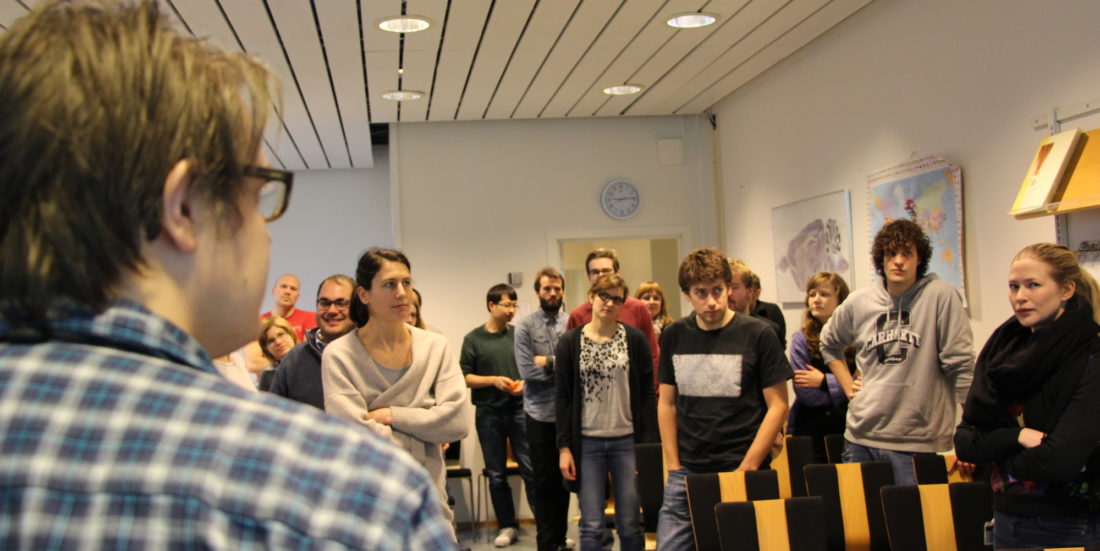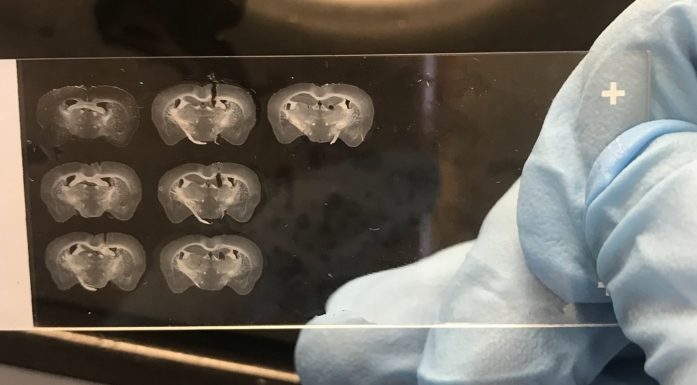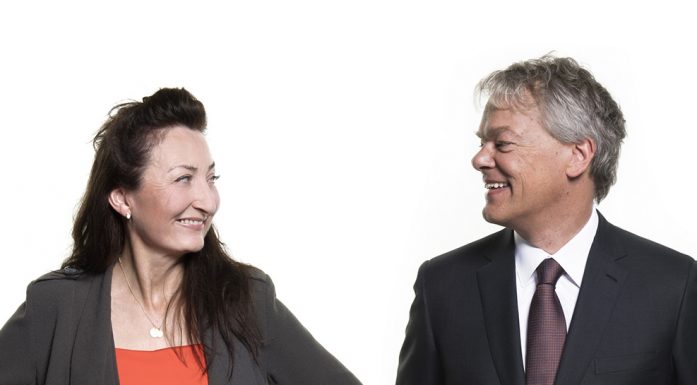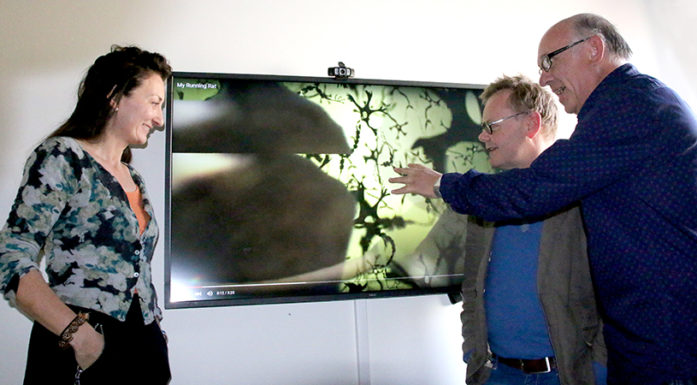Not exactly popcorn
2014 NOBEL PRIZE: When May-Britt Moser gave her Nobel lecture on Sunday, she had some help from the audience. At her signal Moser’s colleagues stood up in the audience and made popping sounds. These are the sounds that the scientists hear when rat brain cells communicate with each other.
“Can we try ten pops?”
Bjarte Bye Løfaldli is talking to a group of neuroscientists and technical staff trying to do something that is much harder than you might think: to make the popping sound that the scientists hear when a rat brain cell fires during an experiment.
Earlier this week a Gemini journalist was invited to watch scientists and staff from the Kavli Institute of Systems Neuroscience and Centre for Neural Computation practice what may be their most unusual assignment ever. When May-Britt Moser gives her Nobel lecture on Sunday, this group will deliver a single kind of noise, on cue and on key. A popping noise.
You can listen to the actual sound of the neurons firing in this video:
Bjarte Bye Løfaldli, a postdoc at the institute, was playing the role of May-Britt for the occasion and tried to coordinate the exercise.
“Everybody got it now? When a rat runs to the left, we need more, higher and faster popping. So it’s important that we pop all at the same time. Let’s try!”
See and hear neurons
The scientists and technical staff are all in Stockholm this week to hear the Nobel lectures, which is where their special job comes in.
“When we are studying the rat’s sense of place we connect electrodes to their heads. Then we can both see and hear what neurons are doing,” said Løfaldli. “When a nerve cell communicates with another nerve cell, it uses electricity. These pulses of electric current are called an action potential. When the cells firing from these action potentials, the sound coming from our speakers sounds just like popping popcorn. That’s the sound we are trying to make.”
May-Britt Moser’s Nobel lecture will address how the sense of place in the rat’s brain works. The popping sounds that the Kavli employees make in the audience will demonstrate how the brain works when the rat chooses to go the right way or the wrong way.
Right and wrong
“Rats plan their behaviour just like other animals. When they want to a certain place, they think of what they need to do. Since they have run in the boxes in our lab before, they know that if they go to the left they will get a treat. If they go to the right they will not get a treat. When a rat does it correctly and runs to the left, we hear the neurons firing with lots of action potentials, which is the neurons saying ‘correct, correct, correct, correct, correct!’. But when the rat chooses the wrong direction and run to the right instead there is almost no popping at all. Then the neurons are saying ‘wrong way, wrong way,'” explained Løfaldli.
Løfaldli said that May-Britt really wanted to use a lot of video clips during the lecture, but since the lecture was being shown on TV, she had problems with obtaining the rights to show the videos she wanted to use. And she didn’t have enough time from when she learned she won the Nobel Prize and when she had to give her lecture to get the rights. That meant that somehow, she had to solve the problem of finding her material and making something especially for the occasion. That’s where her colleagues come in.
“May-Britt was the one who came up with the idea,” Løfaldli said. “She’s the driving force, but we are the ones who have to make it work. But we agree that we need a clear indication of when we are supposed to actually start popping. It would be a real drag to pop in the wrong place, especially on live TV during the Nobel lecture.”
Tough to top
The Kavli scientists and staff have looked forward to the Stockholm trip. They don’t often hear May-Britt and Edvard talk about their larger ideals and visions. The Mosers usually give these kinds of talks when they are not at NTNU. The Nobel lectures give them a chance to hear for themselves how the Mosers see their research leading to them becoming Nobel laureates.
“The Nobel lectures are the chance for the prize-winners to put on a show and they tend to enjoy themselves,” Løfaldli said. “There have been many other exciting Nobel winners before who are incredibly good speakers but I don’t know that anyone has done anything like our little popcorn performance before. It will be exciting to see what they do the next year to top this!”





